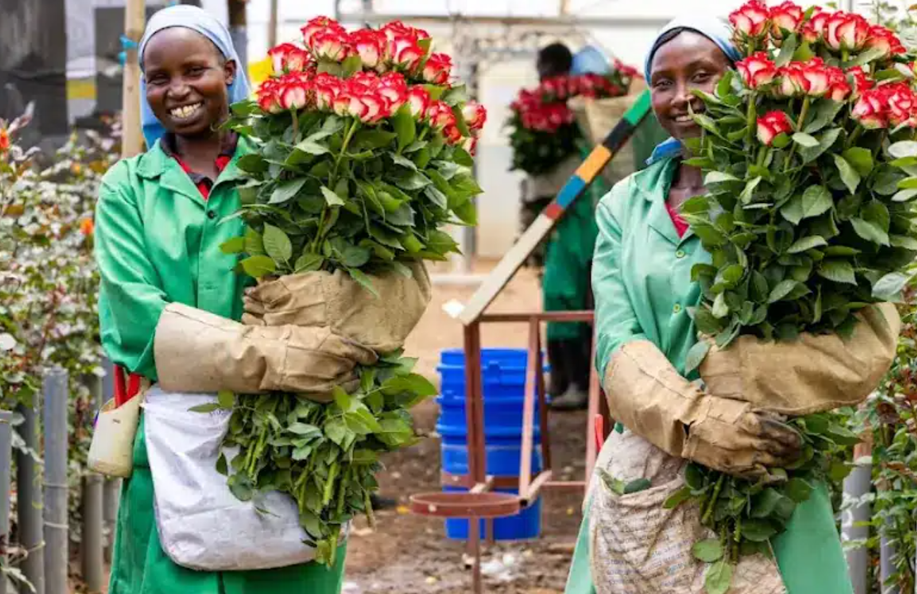
Kenya has already submitted a codes to be used to enhance the quality of flower exports to the European Union market ahead of new regulations on Saturday.
Agriculture Cabinet Secretary Mutahi Kagwe said the county has already developed and tabled a False Codling Moth (FCM) System Approach protocol to the European Union (EU).
He said the country has taken stringent steps to safeguard the export of flowers, which the Flower Council says contributes $3.7 billion (Sh480.7 billion) to the Kenyan economy.
Flowers remain Kenya’s top horticultural export in terms of value. In 2024, the country exported 102,475.80 tonnes of flowers valued at Sh72.1 billion, representing 53 per cent of total horticultural export earnings.
Losing access to the EU, Kenya’s leading flower market would be a devastating blow to growers, exporters, and the national economy at large.
Kenya’s flower industry is facing a significant shift as the European Union (EU) introduces new regulations aimed at safeguarding its agricultural sector.
These changes, set to take effect on April 26, will require Kenyan flower growers to meet stricter pest control and a phytosanitary standard, particularly targeting the False Codling Moth (FCM); a pest that has plagued Kenya’s rose exports and now threatens to disrupt market access if not effectively managed.
To prevent the spread of invasive pests and diseases, the EU enacted Regulation (EU) 2024/2004, mandating tougher import conditions for fresh-cut flowers.
Roses, which form the bulk of Kenya’s flower exports to the EU, will now be subjected to increased inspection rates, rising from five to 25 per cent, starting this Saturday.
The trigger for these heightened controls was a 2023 study by the European Food Safety Authority (EFSA), which confirmed that fresh-cut roses pose a risk of introducing FCM into the EU.
This pest, endemic to sub-Saharan Africa, is known to infest not only flowers but also a range of crops, including citrus, avocado, and vegetables.
In 2024, Kenya recorded 95 rejected consignments and 48 interceptions of flower exports due to the detection of FCM.
These incidents involved over 2.1 million stems, valued at approximately Sh150 million, a sobering figure that underscores the potential financial impact if the industry fails to adapt.
According to Kagwe, Kenya has taken decisive action through the Kenya Plant Health Inspectorate Service (KEPHIS) and other competent authorities, including KALRO, the Pest Control Products Board (PCPB), and the Agriculture and Food Authority (AFA).
The country has committed to a zero-tolerance policy on FCM, pledging 100 per cent compliance with EU regulations.
“To meet this goal, Kenya is implementing the Rose False Codling Moth Systems Approach (Rose FCMSA), a comprehensive pest management strategy approved by the EU, including submission of the FCM Systems Approach Protocol, detailing Kenya’s pest management processes.
Furthermore, capacity building is well underway. The ministry has trained 475 agro-attendants and 849 additional staff across the floriculture value chain to align operations with the new requirements.
Speaking during recently concluded Flower Logistics Africa (FLA) 2025 in Nairobi, Clement Tulezi, CEO of the Kenya Flower Council, painted a nuanced picture of the country's floriculture sector, highlighting both its achievements and challenges.
He warned of significant hurdles threatening the sector's sustainability, key among them strict scrutiny by buyers in the export market.
“European Union regulations present another critical obstacle. Stringent phytosanitary requirements, particularly around the false coddling moth, have led to increased shipment rejections,’’ he said.
He also lamented about high production costs and taxation, which he said are hindering Kenya’s competitiveness in the international market.
"Growers are paying up to 52 taxes and levies every year. Input costs for fertilisers, chemicals, and machinery continue to rise, shrinking profit margins.”
According to him, the industry faces intense international competition, particularly from Ethiopia and Colombia, where production costs are significantly lower.
"In Kenya, a farmer pays $2.7 per kilogram for flowers, compared to $1.9 in Ethiopia. Logistics compound these challenges, with freight costs skyrocketing from $2.1 to $4.3 per kilo between October 2024 and January 2025.”









